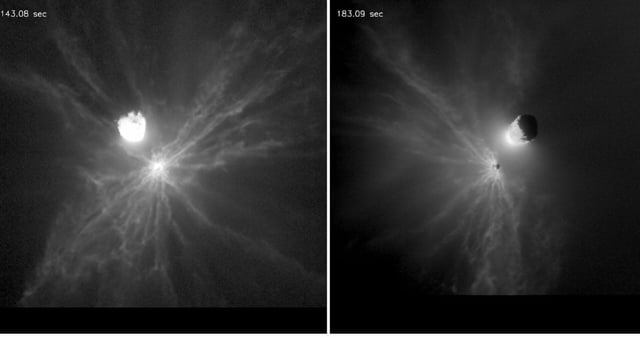Overview
- Using LICIACube imagery, the team tracked 104 meter-scale boulders ranging from 0.2 to 3.6 meters in size, moving at speeds up to 52 meters per second in two distinct clusters.
- These rocks carried over three times the momentum of the DART spacecraft, with much of that force directed perpendicular to the impact vector, potentially tilting Dimorphos’s orbital plane by up to one degree, triggering erratic tumbling.
- Evidence suggests that DART’s solar panels shattered two large boulders—Atabaque and Bodhran—sending fragments into the southern stream and resulting in chaotic, filamentary ejecta patterns that contrast with Deep Impact’s smoother debris.
- The July 7 study in Planetary Science Journal warns that such unanticipated lateral forces complicate kinetic impactor physics and may require revisions to future asteroid deflection models.
- ESA’s Hera mission, set to reach the Didymos-Dimorphos system in 2026, will directly image these boulder streams to validate the study’s predictions and refine asteroid deflection strategies.
